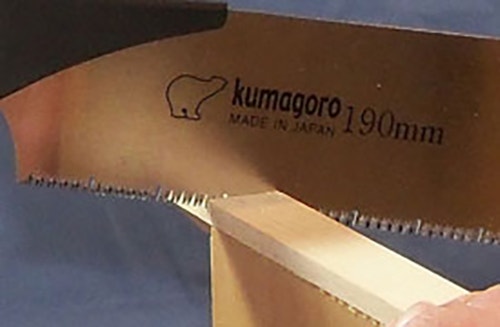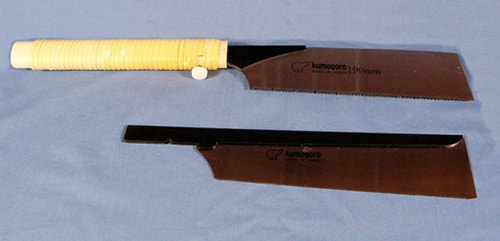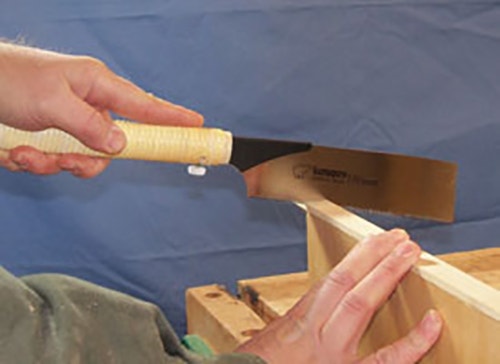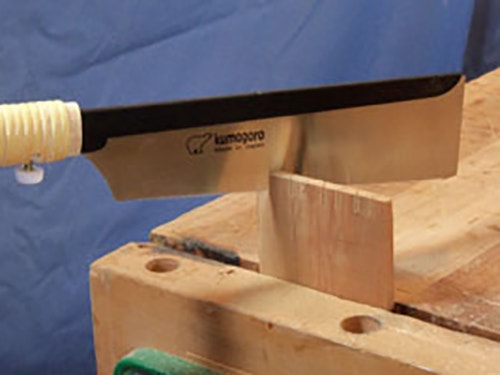Hand Saw Overview: Japanese Saw
Over the last ten years or so, Japanese style saws have become widely available in the US market, so I thought I would discuss them as part of this handsaw series.
Western style saws cut on the push stroke, where as Japanese-style saws cut on the pull stroke. The big difference this makes is that Japanese saws have relatively thin blades compared to their Western counterparts. Western saws need to be stiffer to resist bending when cutting. Since the Japanese saw cuts on the pull stroke, the resistance of the cutting action actually pulls along the blade length, helping to keep it straight. As a result, the blade can be thinner and the kerf narrower.

On inspection, you'll also notice that the shape of the teeth is also quite elaborate, although many western saws are adopting a similar tooth geometry. Because the teeth tend to be small and fragile, they are specially hardened, which you can see in the discoloration of the teeth.

Where these Japanese-style saws shine is in the fine detail work that I typically grab a handsaw to do. The thin kerf and very fine teeth make accurately cutting dovetails quick and easy.

I also prefer these saws for edgebanding and other trimming tasks. A good starter set usually has a single handle with a crosscut and rip blade. I like this type for working on the jobsite. They are compact and travel better than comparable Western saws.

Japanese-style saws can be a very useful addition to your toolbox, and are always a pleasure to use. They represent an alternative choice for the tasks you perform around your home and shop.
Keep the inspiration coming!
Subscribe to our newsletter for more woodworking tips and tricks






